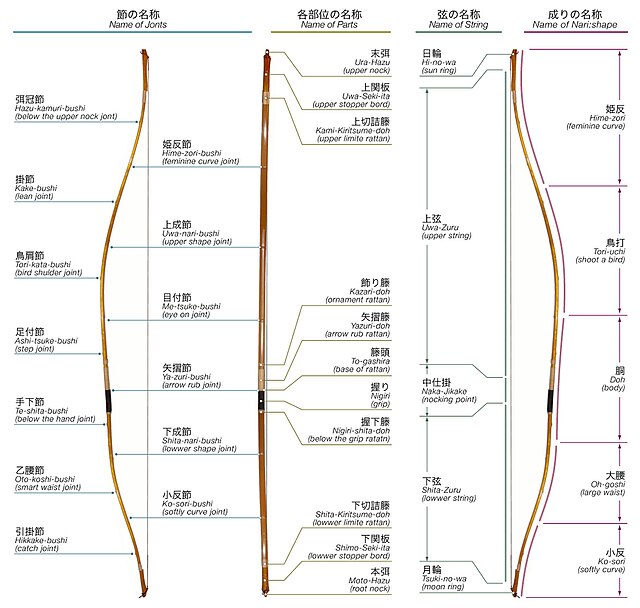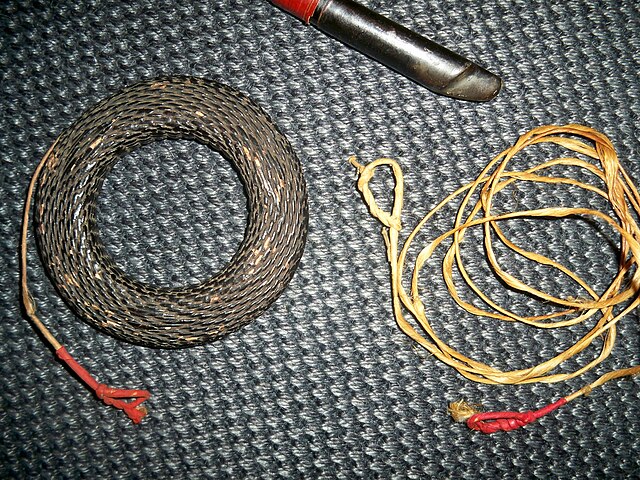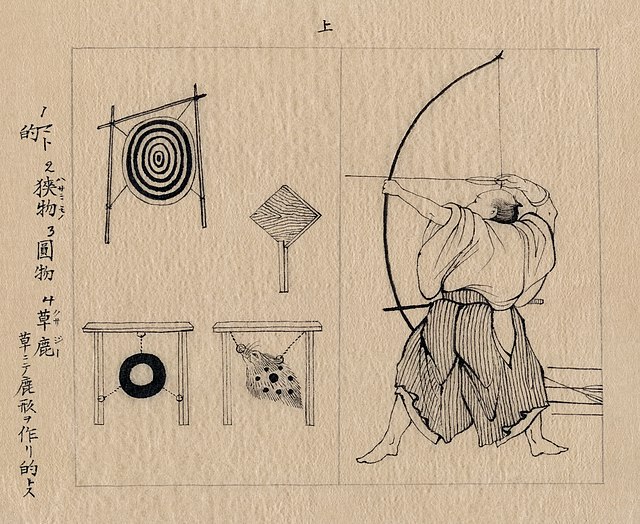Yumi is the Japanese term for a bow. As used in English, yumi refers more specifically to traditional Japanese asymmetrical bows, and includes the longer daikyū and the shorter hankyū used in the practice of kyūdō and kyūjutsu, or Japanese archery.
Japanese bows, arrows, and arrow-stand
Yumi bow names
Tsurumaki (string holder) and tsuru (string)
Ukiyo-e by Tsukioka Yoshitoshi depicting Minamoto no Tsunemoto hunting a sika deer with a yumi
Kyūdō is the Japanese martial art of archery. Kyūdō is based on kyūjutsu, which originated with the samurai class of feudal Japan. In 1919, the name of kyūjutsu was officially changed to kyūdō, and following the example of other martial arts that have been systematizing for educational purposes, kyūdō also reorganized and integrated various forms of shooting that had been used up until then. High level experts in kyūdō may be referred to as kyūdōka (弓道家)(Member of the Kyūdō family or house) and some practitioners may refer to themselves as yumihiki (弓引き), or 'bow puller'. Kyūdō is practised by thousands of people worldwide. The bow they use is called a yumi (弓), and the most common one has an asymmetrical shape of more than 2.0 metres, and is characterized by the archer holding the part of the bow below the center to shoot the arrow.
Inagaki Genshiro H9 does Kyūdō
A Japanese archer with targets. Ink on paper, 1878.
A kyūdō practitioner shooting at a makiwara
A three-fingered glove, or mitsugake








